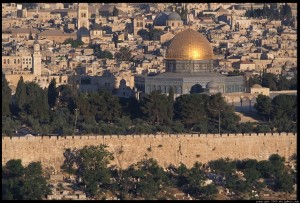 Gershom Gorenberg writes in Slate:
Gershom Gorenberg writes in Slate:
Rather than being a diorama of traditional Jewish life in Eastern Europe before the Holocaust, as many Israelis and visitors believe, Israel’s present-day version of ultra-Orthodoxy is a creation of the Jewish state. Policies with unexpected effects fostered this new form of Judaism, at once cloistered and militant. So did successful measures by haredi leaders to revive a community that was shrunken by modernity and then devastated by the Holocaust.
While a similar revival has taken place in haredi communities in the United States and other western countries since World War II, their dependence on government funding is necessarily more limited. In turn, the extent to which adult men can engage in full-time religious study rather than working is also more restricted.
In economic terms, the haredi revival in Israel has been disastrous. Israel’s ultra-Orthodox community is ever more dependent on the state and, through it, on other people’s labor. Exploiting political patronage, ultra-Orthodox clerics have largely taken over the state’s religious bureaucracy, imposing extreme interpretations of Jewish law on other Jews. By exempting the ultra-Orthodox from basic general educational requirements, the democratic state fosters a burgeoning sector of society that neither understands nor values democracy.
Gorenberg’s description of the way that “cloistering” has worked is worth pondering:
Remaining a full-time Torah student [with the help of generous taxpayer funding] allowed a man to stay out of uniform. The deferment helped lock young men into the kollel lifestyle. So did the education gap: Though ultra-Orthodox men spent years engaged in study, their schooling did nothing to prepare them for jobs in a modern economy. From their teens on, their curriculum was devoid of mathematics, sciences, foreign languages and other general studies.
Thus “the society of scholars”—as sociologist Friedman named it—took shape. Older haredi men, who’d come of age before the change, worked for a living. A growing number of young men stayed in kollel after marriage, often for a decade or more. The father was a carpenter, shopkeeper or tailor; the son was a full-time student. In a universe of arranged marriages, Torah scholars were the most sought-after grooms.
Between 1952 and 1981, the average marriage age of ultra-Orthodox men in Israel fell from 27.5 to 21.5. At the beginning of that period, the typical haredi groom was slightly older than the average for Israeli Jewish society. By 1981, he was four years younger than the Israeli Jewish average. Among haredi women, marriage before age 20 became the standard. Ultra-Orthodox couples started having children early and continued to have them often. This, too, made leaving haredi society much more difficult, for women as well as men.
In the 1940s, it had seemed to ultra-Orthodox educators and parents that nothing could stop young people from giving up religion. Now the exodus stopped. The gulf between the society of scholars and the secular world grew too wide to cross. Rabbis wrote with satisfaction that children were outdoing their parents at piety.
And that’s bad news for Israel.
